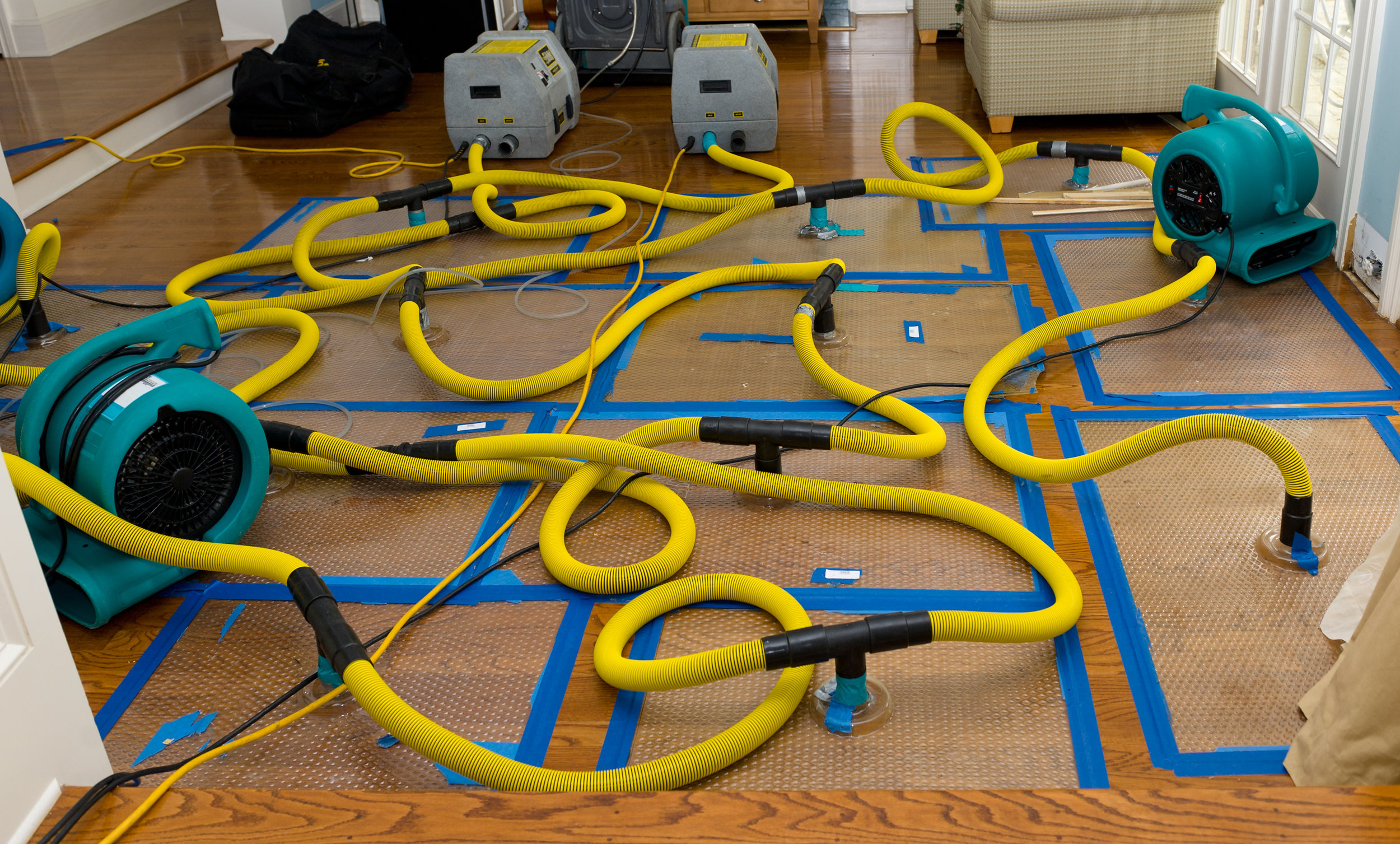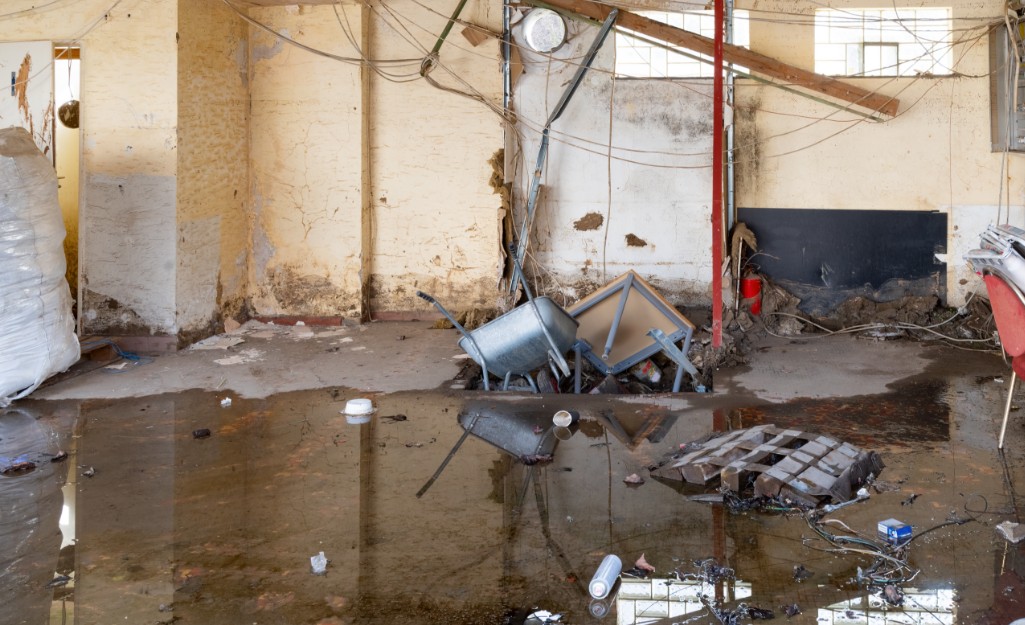How to Prevent Mold Growth After Water Damage Cleanup
Wiki Article
Essential Steps to Follow for Effective Water Damage Repair in Your Home
When confronted with water damages in your home, recognizing the important steps for reliable remediation can make all the difference. You require to evaluate the damages and assurance safety and security before taking on the issue. Quiting the source of water is essential, yet it's just the start. There's a series of actions you have to take to safeguard your residential or commercial property from more issues when you have actually taken care of that. Let's explore what you need to do next.Evaluate the Damages
When you find water damages in your house, the very first step is to examine the damages thoroughly. Start by recognizing the source of the water intrusion. Look for leakages, ruptured pipelines, or various other issues causing the issue. Next, examine the affected areas for visible indications of damages, consisting of mold, warping, or discoloration growth. Don't forget to look in hidden spots like behind walls or under floor covering, as water can permeate right into these locations unnoticed.Document the damages by taking clear images and notes. When discussing the scenario with your insurance policy copyright or reconstruction experts, this will help you. Focus on the kind of products impacted, as different materials call for various remediation methods. Assess the level of the damage. Is it minor or substantial? Understanding the range will assist you in choosing whether to handle it yourself or hire the experts for a much more extensive restoration process.
Make certain Safety
Prior to you start any restoration job, ensuring your safety and security is necessary. Examine the problem of your home. If the water's deep or if you discover electrical threats, don't enter the area. Transform off the electrical energy and gas supply to avoid mishaps. Use safety equipment like gloves, boots, and masks to secure on your own from pollutants or mold.It's important to remain knowledgeable about your environments; look for sharp items and slippery surface areas. If the water is from a sewer back-up, treat it as dangerous waste. Keep children and pet dogs away from influenced areas to avoid exposure.Once you have actually taken these safety measures, you can proceed with the restoration procedure. Remember, your safety and security comes initially, and if you're ever unclear, it's finest to speak with a specialist. Taking these actions will aid ensure you're ready to take on the remediation securely and properly.Quit the Source of Water
After guaranteeing your security, the following step is to quit the source of water. Determine where the leakage is coming from. Maybe a ruptured pipeline, a malfunctioning device, or perhaps hefty rainwater going into via a damaged roof covering. If it's a plumbing concern, switch off the major supply of water to your home to protect against further flooding. For devices, disconnect them and shut off their water valves.If the source is outside, like rain, attempt to divert it away from your home making use of sandbags or various other barriers. For small leaks, you may be able to utilize tape or a sealer temporarily up until a specialist can repair it. Remember, addressing the resource promptly is crucial to decreasing damage and protecting against mold growth. When you have actually quit the water, you'll remain in a better position to carry on to the following action in the restoration process.
Remove Excess Water
Act promptly to eliminate excess water, as standing water can bring about a lot more extensive damages and mold and mildew development. First, gather your tools: a wet/dry vacuum cleaner, buckets, and towels. If the water is superficial, you can make use of towels to take in the wetness. For deeper water, a wet/dry vacuum cleaner is your best wager. Ensure to empty the vacuum cleaner regularly to prevent overflow.If the water is infected, like from a sewage backup, use safety equipment, consisting of gloves and masks, to keep on your own safe. Once you've removed as much water as possible, look for concealed pockets of dampness in edges and under furniture, as these can nurture mold.Don' t neglect to transform off electric devices and power outlets in wet locations to avoid threats. This initial step is crucial in decreasing damages and establishing the phase for a successful reconstruction process.Dry and Dehumidify the Area
It's essential to completely dry and dehumidify the area completely when you've removed the excess water. Begin by using dehumidifiers properly to pull dampness out of the air and prevent mold growth. Watch on humidity levels to assure the room dries totally.Remove Standing Water
To properly deal with water damages, you need to concentrate on removing standing water as swiftly as feasible. Start by collecting required devices, like a wet/dry vacuum cleaner or a pump, depending upon the quantity of water. If the water is superficial, a vacuum needs to do the trick. For larger quantities, a pump is much more efficient. While working, ensure to wear protective gear to maintain on your own secure from pollutants. As you remove the water, take note of hidden locations like under furniture or in edges where water may collect. Your area will start to dry out as soon as you've removed the majority. This step is necessary, as sticking around read more water can result in mold and mildew development and much more comprehensive damage.Usage Dehumidifiers Efficiently
Exactly how can you effectively use dehumidifiers to dry and dehumidify your area? Beginning by placing your dehumidifier in one of the most afflicted location, ideally where water damages is most extreme. See to it to close all doors and windows to develop a covered atmosphere. Switch on the dehumidifier and established it to the appropriate humidity level, typically around 30-50%. Empty the water collection storage tank regularly, or consider utilizing a design with a continuous drainage option for benefit. Ideally, utilize followers to enhance airflow, assisting the dehumidifier work extra efficiently. Keep the dehumidifier running till you're certain that the location is extensively dried, stopping mold growth and extra damages (Water Damage Cleanup). This step is vital for effective water damage repairDisplay Moisture Degrees
Surveillance humidity degrees is essential during the drying out process, as it helps ensure your space remains devoid of excess wetness. Invest in a trustworthy hygrometer to track moisture precisely. Preferably, you want to keep degrees in between 30% and 50%. You might need to adjust your dehumidifiers or fans to enhance airflow if moisture readings climb above this array. Inspect the readings routinely, particularly in areas susceptible to dampness, like basements or restrooms. If you notice persistent high moisture, take into consideration enhancing ventilation or using additional dehumidifiers. Remaining on top of these levels not only quickens the drying out process yet additionally stops mold development, guaranteeing your home remains comfortable and risk-free.Tidy and Disinfect Affected Surfaces

Bring back and Repair Your Home
After cleansing and sanitizing the affected areas, it's time to restore and fix your home. Begin by examining the damages. Look for structural problems, like weakened walls or floorings, and address any needed repair work. Replacing damaged drywall or flooring is essential for both looks and safety.If your furnishings or possessions were influenced, take into consideration whether they can be restored or require replacement. Clean or professionally bring back things where possible.Next, touch and repaint wall surfaces up any areas that need focus. This not just improves look however additionally protects surface areas from future water damage.Don' t forget to inspect your pipes and devices for leaks, making sure everything's functioning appropriately. Take into consideration installing a dehumidifier to avoid future wetness concerns. By taking these actions, you'll restore your home to its former glory and produce a much safer living atmosphere.Regularly Asked Inquiries
For How Long Does Water Damage Repair Commonly Take?
Water damages restoration generally takes anywhere from a few days to a number of weeks, depending upon the degree of the damage (Smoke Damage Restoration). You'll desire to analyze the situation quickly to minimize further complications and ensure proper remediationWill My Insurance Policy Cover Water Damages Restoration Prices?
Your insurance policy could cover water damages repair expenses, but it depends on your plan. Examine your insurance coverage details and call your insurance policy representative to clarify what's included and what you need to sue.
Can I Manage Water Damage Restoration Myself?
You can handle water damages restoration on your own, yet it's essential to assess the situation initially. You may desire to call experts if it's comprehensive. Constantly prioritize safety and security and ensure you've obtained the right tools.What Are the Indicators of Hidden Water Damage?
You could discover indicators of concealed water damage like distorted wall surfaces, moldy smells, or discoloration. If your floorings feel squishy or you area mold and mildew, it's time to examine better before the scenario intensifies.Exactly How Can I Stop Future Water Damages in My Home?
To avoid future water damages in your home, you must routinely inspect plumbing, seal cracks, maintain rain gutters, and assurance proper drainage. Installing a sump pump and dampness barriers can likewise help maintain your area completely dry. When you uncover water damages in your home, the first step is to evaluate the damages thoroughly. Act swiftly to get rid of excess water, as standing water can lead to more comprehensive damages and mold and mildew development. To properly take on water damages, you require to concentrate on getting rid of standing water as promptly as feasible. As you remove the water, pay attention to hidden areas like under furniture or in corners where water might collect. Water damages restoration generally takes anywhere from a few days to several weeks, depending on the extent of the damages.Report this wiki page